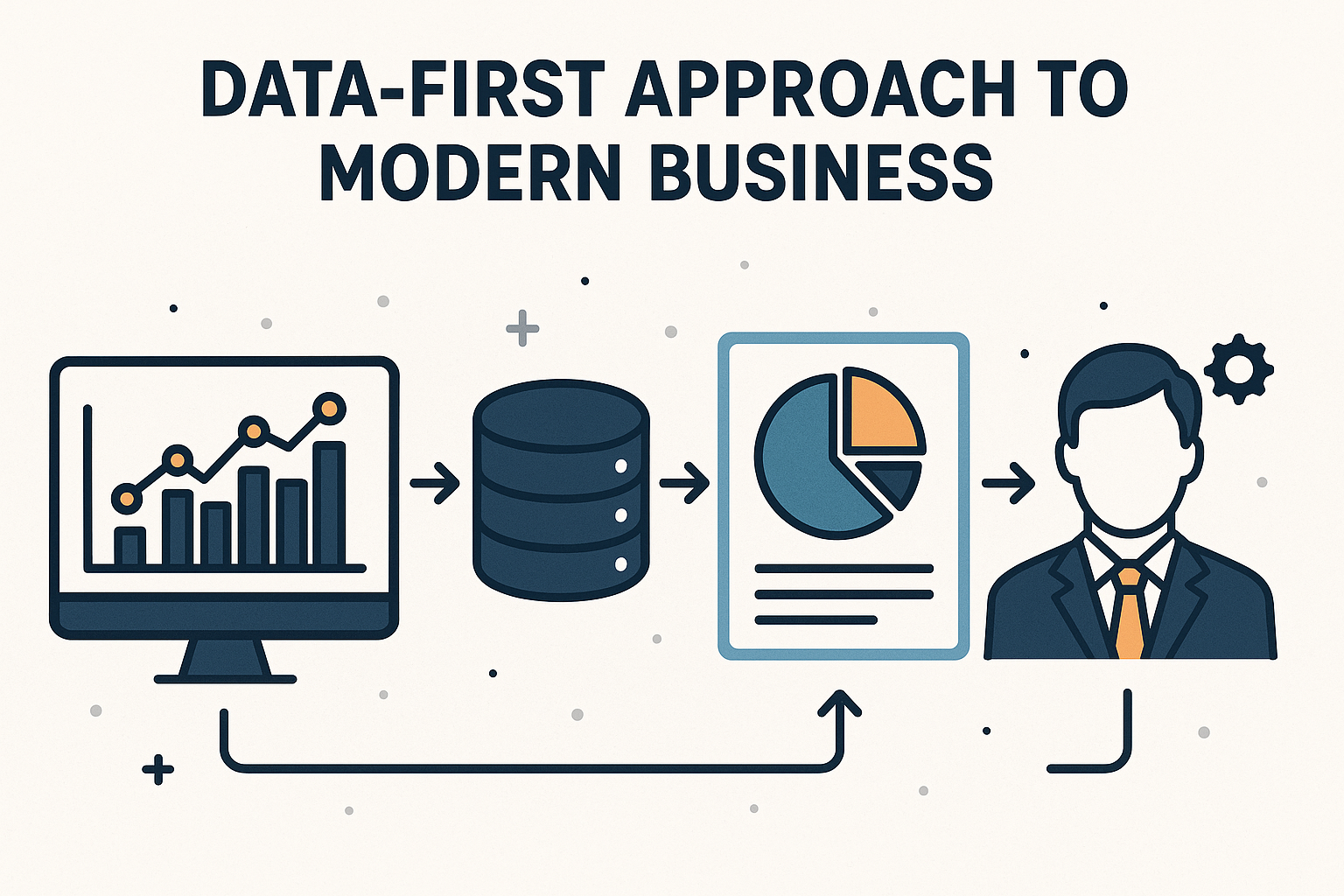Modern businesses don’t run on intuition—they run on insight. A data-first approach means making data the starting point, not the byproduct, of every decision, product, and process. It shifts the enterprise mindset from “collect and analyze” to “connect and act.”
What “Data-First” Actually Means
Most organizations are data-aware, but few are data-driven. A data-first business is:
Proactive: Anticipates trends with real-time data
Decisive: Makes Choices based on evidence, not guesswork
Aligned: Connects metrics with mission-critical outcomes
Composable: Treats data as reusable assets across teams
Data-first isn’t about dashboards. It’s about decisions.
Core Pillars of a Data-First Strategy
1. Unified Data Architecture
Break down silos—enable cross-functional access
Use modern warehouses/data lakes to centralize and govern
2. Data Governance + Trust
Clean, validated, and lineage-tracked data
Build trust through transparency and access controls
3. Real-Time and Self-Service Analytics
Move from monthly reports to live insights
Empower users with tools like Looker, Power BI, or Tableau
4. Embedded Intelligence
Bake insights into apps, workflows, and customer experiences
Go from “reporting” to “recommending”
Business Impact of Data-First Thinking
| Function | Traditional Model | Data-First Model |
| Marketing | Segments by demographics | Predicts behavior with AI/ML |
| Operations | Past performance reports | Real-time anomaly detection |
| Product | Gut-feel features | Built based on usage data & feedback loops |
| Function | Traditional Model | Data-First Model |
| Finance | Quarterly forecasts | Dynamic cash flow modeling |
Data isn’t just for BI teams—it becomes everyone’s strategic advantage.
Challenges in Adopting a Data-First Approach
Cultural resistance: People trust their instincts over data
Siloed systems: Inconsistent, fragmented data sets
Overload without insight: Too much data, too little action
Weak data literacy: Lack of ability to interpret and question data
Conclusion
Becoming data-first is not about collecting more data. It’s about activating the right data to drive better outcomes. The modern enterprise must treat data not as exhaust, but as fuel— powering every decision, every interaction, and every transformation.





